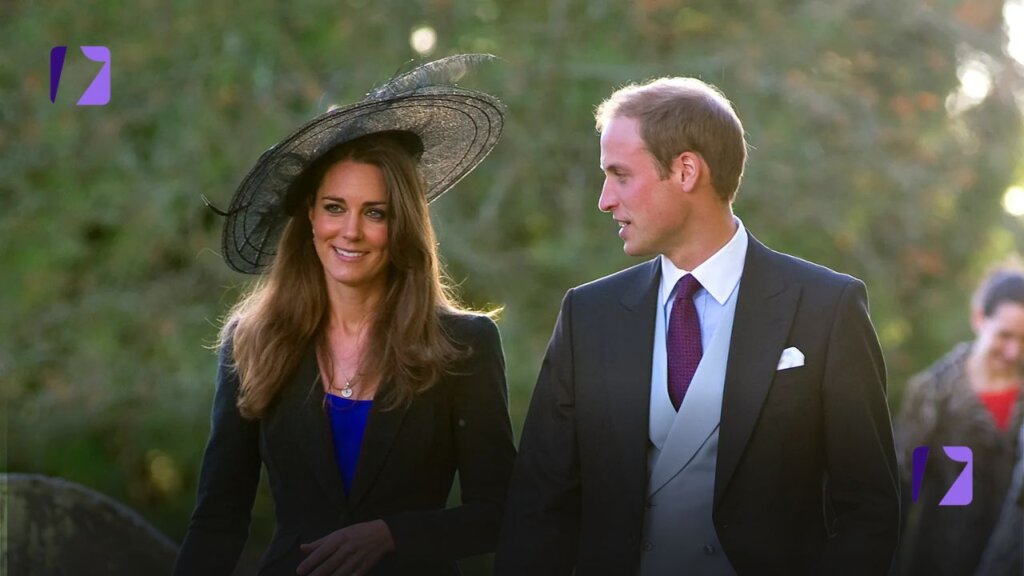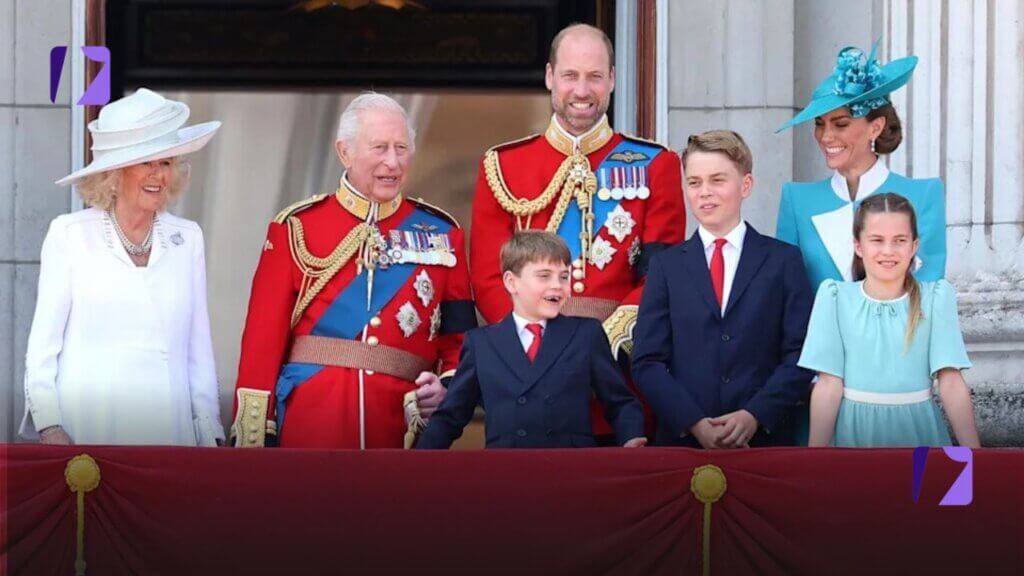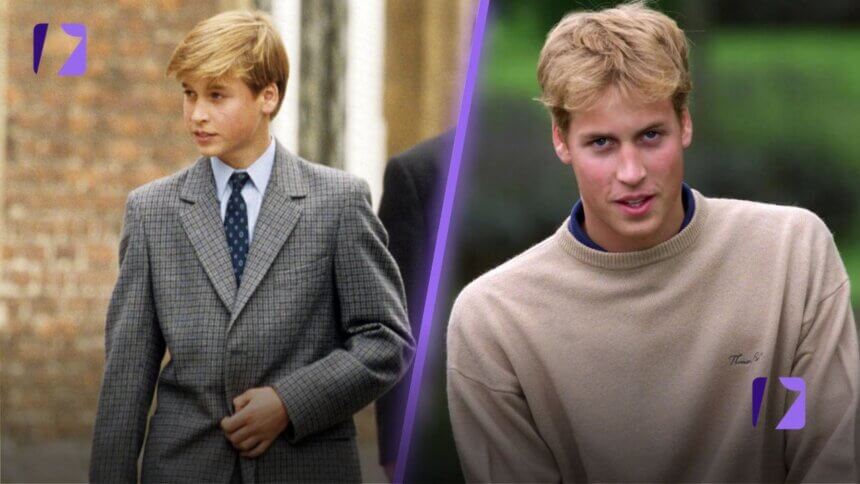Prince William, the Prince of Wales, has grown before the world’s eyes from a shy, soft-spoken boy into a confident royal leader prepared to inherit the British throne. As the eldest son of King Charles III and the late Princess Diana, Prince William’s journey has been both privileged and deeply human. His early years were shaped by royal expectations, public attention, and the emotional challenges of living under constant media scrutiny.
Despite growing up in one of the most famous families on Earth, Prince William has managed to remain grounded, compassionate, and deeply committed to duty. His transformation from a young prince to a future monarch reflects resilience, character, and the powerful influence of his late mother’s empathy. His story is one of evolution—showing how a boy destined for greatness learned to balance royal tradition with modern sensibilities.
Quick Bio
| Category | Details |
|---|---|
| Full Name | William Arthur Philip Louis Windsor |
| Title | Prince of Wales (formerly Duke of Cambridge) |
| Date of Birth | June 21, 1982 |
| Place of Birth | St. Mary’s Hospital, London, England |
| Parents | King Charles III and Princess Diana |
| Siblings | Prince Harry, Duke of Sussex |
| Education | Eton College; University of St. Andrews |
| Occupation | Senior Working Royal, Former RAF Search and Rescue Pilot |
| Spouse | Catherine Middleton (married 2011) |
| Children | Prince George, Princess Charlotte, Prince Louis |
| Notable Traits | Compassionate leader, strong family man, advocate for mental health |
| Line of Succession | First in line to the British throne |
Early Life and Childhood in the Royal Family
Prince William was born on June 21, 1982, at a time when the world’s fascination with the royal family was at its peak. His birth marked a historic moment—the first time in 100 years that a direct heir to the British throne had been born to a Prince of Wales. Growing up, William lived partly at Kensington Palace and partly at Highgrove House, where he enjoyed a mix of royal formality and his mother’s desire for normalcy.
From an early age, Princess Diana made sure William experienced life beyond palace walls. She took him and his brother, Prince Harry, to homeless shelters, hospitals, and public places—showing them the realities of the world. This early exposure instilled in William a sense of empathy and duty that would later define his leadership style.
The Influence of Princess Diana on Young Prince William
Princess Diana’s influence on William was profound. She wanted her sons to grow up with compassion, humility, and awareness of the struggles of ordinary people. She famously said she wanted her boys to be “aware of people’s emotions, their insecurities, and distress.” This emotional education became William’s foundation for leadership.
Her tragic death in 1997, when William was just 15, changed him forever. Walking behind his mother’s coffin during her funeral remains one of the most poignant images in royal history. That moment forced William to grow up faster than most teenagers, shaping his understanding of grief, resilience, and the heavy cost of public life. To this day, he honors her legacy through his charitable work and emotional openness.
Education and Early Interests of the Young Prince
Prince William’s academic journey began at Jane Mynors’ Nursery School, followed by Wetherby School and Ludgrove School. Later, he attended Eton College, one of the UK’s most prestigious schools, where he excelled in geography, biology, and art history. His teachers and peers described him as intelligent, athletic, and humble despite his royal status.
At Eton, William developed interests in sports, particularly swimming, football, and polo. He also showed a natural curiosity about the environment and social issues—interests that would shape his future initiatives like The Earthshot Prize. After Eton, he took a gap year, working on community projects in Chile and Africa before enrolling at the University of St. Andrews in Scotland—where fate introduced him to his future wife, Catherine Middleton.
Dealing with Public Attention and the Loss of His Mother
Growing up royal meant living under constant media scrutiny. From his earliest years, photographers followed every step he took. Princess Diana’s death amplified this pressure, as the young princes became the public’s emotional focus. William, though naturally private, learned to navigate fame with grace.
Despite the spotlight, he remained focused on his studies and personal growth. The royal family shielded him as much as possible, allowing him to experience life as a normal young man. These years taught William balance—between privacy and duty, independence and expectation. His maturity during these difficult times earned him deep public respect.
University Years: Finding Independence and Purpose
Prince William’s time at the University of St. Andrews was a turning point. Studying art history (later switching to geography), he found freedom and independence away from royal life. It was here that he formed lasting friendships, explored life as a student, and built his identity outside of the crown’s shadow.
Most importantly, it was at St. Andrews that he met Catherine Middleton. Their friendship blossomed into romance, and Catherine quickly became an essential part of his journey. University life taught William the importance of normalcy—shopping for groceries, cooking, and living among regular people. This grounded approach would later define his modern take on royalty.
Prince William and Kate Middleton: A Love Story that Captivated the World

Prince William and Kate Middleton’s relationship captured global attention from the start. Their story began as university friends, built on shared values, humor, and mutual respect. After years of dating—and a brief split—the couple got engaged in November 2010, with William proposing using Princess Diana’s iconic sapphire engagement ring.
Their wedding on April 29, 2011, at Westminster Abbey was watched by nearly 2 billion people worldwide. Yet beyond the grandeur, what endeared them to the public was their authenticity. Together, William and Kate have built a partnership rooted in love, equality, and a shared commitment to family and service—qualities that will serve them well as the future King and Queen.
Royal Duties: From Young Heir to Active Leader
As a young royal, Prince William was slowly introduced to public duties. His early engagements focused on charities supporting children, the environment, and mental health. He later served as a full-time search and rescue pilot in the Royal Air Force, a role that earned him respect for his dedication and humility.
Today, William takes on increasing responsibilities as Prince of Wales, representing the monarchy across the Commonwealth. His work centers on modern issues like climate change, mental health awareness, and homelessness. His ability to blend tradition with progressiveness reflects his readiness to lead the monarchy into a new era.
Humanitarian Efforts and Military Service
Prince William’s humanitarian journey reflects the powerful influence of both his parents—embracing Princess Diana’s empathy and King Charles III’s dedication to public service. Over the years, William has devoted his platform to improving lives and addressing critical social issues. Together with Catherine, Princess of Wales, he actively advocates for mental health awareness, believing that emotional well-being is just as important as physical health. Their landmark campaign, Heads Together, has encouraged millions to speak openly about mental health challenges, helping to remove stigma and create supportive environments across the UK.
In addition to his charitable work, Prince William has shown strong commitment to veterans and active-duty service members. His close connection to the armed forces stems from his own military background. William trained at the Royal Military Academy Sandhurst, served in the Royal Air Force as a search-and-rescue pilot, and later worked with the East Anglian Air Ambulance. During his service, he participated in real-life rescue missions, demonstrating bravery, discipline, and strong dedication to public safety. His involvement in organizations such as The Royal Foundation, United for Wildlife, and The Royal Air Force Association further reinforces his leadership in global humanitarian efforts.
Balancing Family Life and Royal Responsibilities

Prince William is not only a future king but also a devoted husband and father. He and Catherine have three children—Prince George, Princess Charlotte, and Prince Louis—whom they are raising with a focus on love, normalcy, and values. Despite their royal roles, William and Kate prioritize school runs, family vacations, and private moments away from the limelight.
This balance between duty and family life showcases the couple’s modern approach to monarchy. William often speaks about protecting his children’s privacy, ensuring they have a childhood far different from his own. His parenting style echoes Princess Diana’s warm, present, and emotionally supportive.
The Making of a Modern Monarch: Prince William’s Vision for the Future
Prince William embodies a new vision for the British monarchy one rooted in service, compassion, and relevance. He understands the challenges facing the royal institution and the need to evolve with time. His initiatives reflect this vision: the Earthshot Prize focuses on global environmental solutions, while Shout and Heads Together promote mental health awareness.
William’s leadership style blends tradition with innovation. He values transparency, simplicity, and purpose. As he prepares to ascend the throne, he represents hope for a monarchy that remains connected to its people while addressing the world’s pressing issues.
How Prince William Inspires the Next Generation of Royals
As a father and mentor, Prince William is shaping the next generation of royals to be emotionally aware, socially conscious, and grounded. His children are growing up in a world vastly different from his own childhood—where digital media dominates and privacy is scarce. William’s focus on empathy and education ensures they inherit not only titles but also strong moral compasses.
Beyond his own family, William inspires young people globally to care about mental health, the planet, and kindness. His ability to connect with people of all ages without arrogance or distance makes him a relatable royal for the modern world.
Conclusion
Prince William’s journey from a young royal boy to the poised Prince of Wales is one of growth, courage, and compassion. He has gracefully navigated the challenges of fame, personal loss, and duty, emerging as a leader grounded in empathy and purpose. Guided by his mother’s compassion, his father’s sense of tradition, and his wife’s unwavering support, he represents a bridge between the monarchy’s past and its future.
As the world looks ahead to his reign, Prince William stands ready—not just as a future king, but as a symbol of a modern, caring, and forward-thinking monarchy. His life reminds us that even within the world’s oldest traditions, there is always room for kindness, change, and humanity.
FAQs
When was Prince William born?
Prince William was born on June 21, 1982, at St. Mary’s Hospital in London.
What was Prince William’s early life like?
He grew up between royal palaces and the countryside, with Princess Diana ensuring he experienced both royal duties and normal childhood moments.
Where did Prince William study?
He attended Eton College and later studied geography at the University of St. Andrews in Scotland.
What causes is Prince William passionate about?
He focuses on mental health, environmental protection, homelessness, and supporting young people.
Who are Prince William’s children?
He has three children: Prince George, Princess Charlotte, and Prince Louis.
Visit More: Daniel Brunskill









